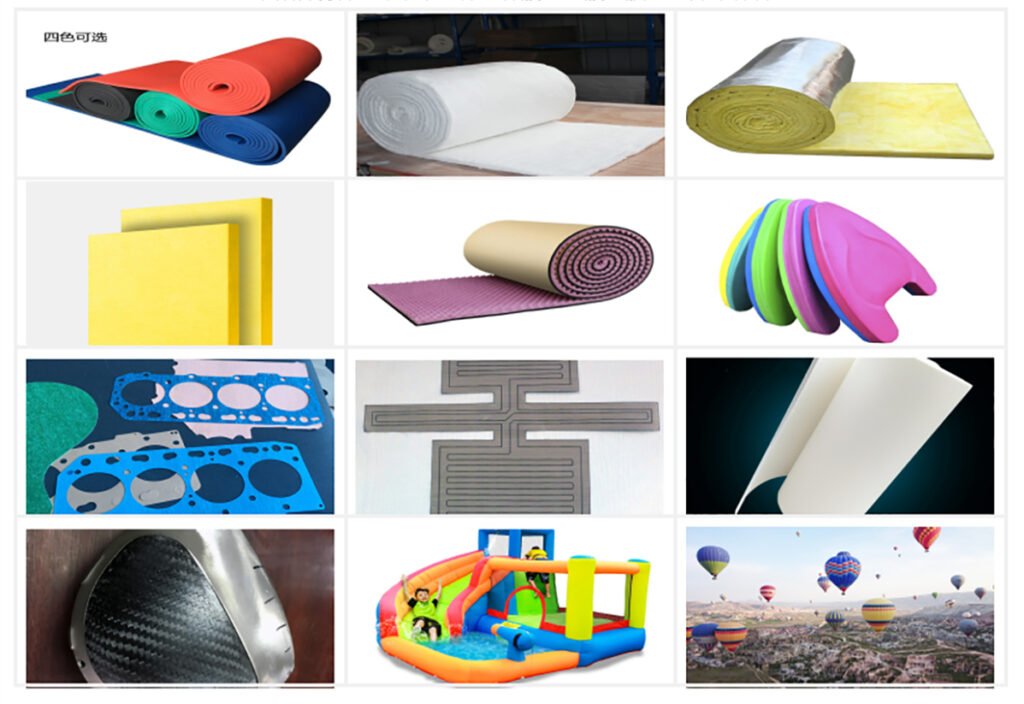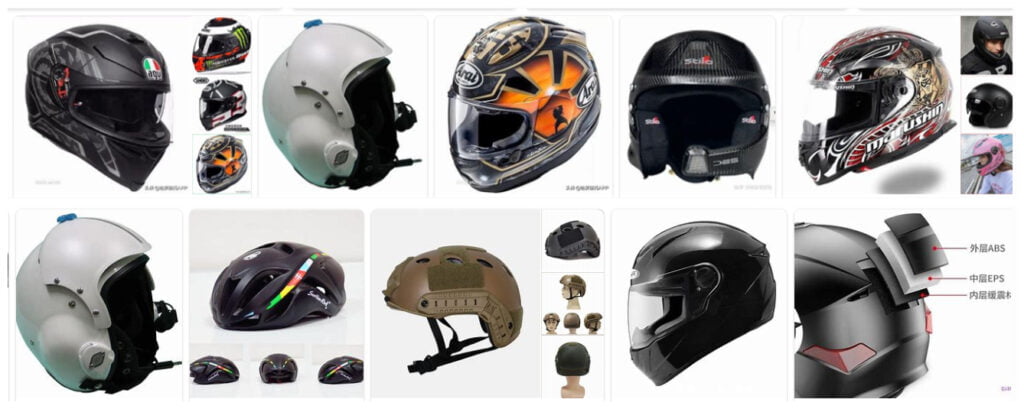This is a set of robotics project from Win-Win water jet company for automotive interior cutting, currently in progress.
Win-Win water jet company chose a two-floor design robotics water cutting program, matched with two ABB ceiling type robot arms, and our Screamlin SL-VI (50HP), Win-Win water jet company can except the cutting platform, robot arms, and other equipment are placed on the second floor, this design is very economical. water jet company Screamline SL-VI(50HP), Win-Win water jet company can put all the equipment on the second floor except the cutting platform and robot arms, this design is very economical. We will update the robot cases on YouTube Channel, welcome to check.

Today we are going to talk about what specific materials can be cut with a water jet cutting machine of water jet company?
What types of composites are there?
A composite material is a new type of material composed of two or more materials, usually including two parts: matrix and reinforcement.
Matrix is the dominant part of the composite material, usually made of polymer plastics, metals or ceramics, etc. It is the carrier of the composite material, and also the main source of the composite material’s properties such as flexibility, corrosion resistance and insulation.
Reinforcement material is the part of the composite material used to enhance the performance of the matrix, usually in the form of fibers, particles, films or foams. Commonly used reinforcing materials include:
Glass Fiber: Glass fiber is a commonly used reinforcing material with excellent mechanical properties and corrosion resistance.
Carbon Fiber: Carbon fiber is a high-strength, high-modulus reinforcing material commonly used in the manufacture of products such as high-performance aerospace vehicles and racing cars.
Ceramic particles: Ceramic particles are a kind of reinforcing material with high hardness and good abrasion resistance, and are usually used to manufacture high-strength ceramic composite materials.
Graphite particles: Graphite particles are a low-density, high-strength reinforcing material usually used in the manufacture of low-density graphite composites.
Film: Film is a thin, tough reinforcing material that is typically used to make high-strength film composites.
Overall, the performance of composites depends on the properties, proportions, and combination of matrix and reinforcement materials. Composite materials are characterized by lightweight, high strength, high stiffness, good corrosion resistance, etc. They have a wide range of applications in aerospace, automotive, construction, sporting goods and other fields.
Can carbon fiber be cut with a water jet cutting machine of water jet company?
Carbon fiber is a very strong, stiff, and lightweight composite material, so it needs to be cut with the proper cutting tools and methods to avoid unnecessary damage to it. A water jet cutting machine is a commonly used cutting machine that can be used to cut a wide range of materials, including metal, stone and some composites.
When using a water jet of water jet company to cut carbon fiber, you need to pay attention to the following points:
Choose the appropriate nozzle: The cutting effect of water jet cutting machine of water jet company is affected by the nozzle. In order to avoid damage to the carbon fiber, appropriate nozzles should be selected, such as smaller aperture and lower jet pressure.
Control cutting speed: Carbon fiber should be cut as slowly as possible to avoid damage to it during the cutting process of water jet company.
Control water pressure and water flow: Water jet cutting requires control of water pressure and water flow to ensure cutting quality and stability of water jet company.
Prevent carbon fiber surface burrs: To prevent burrs on the surface of carbon fiber, you can apply a layer of protective agent or use a special cutting fluid before cutting of water jet company.
What treatment is required after cutting carbon fiber of water jet company?
Carbon fiber is a high-strength, high-stiffness composite material that requires proper treatment after cutting to ensure its performance and quality. Here are some common treatments for carbon fiber after cutting: Deburring: When cutting carbon fiber, burrs may be created on the cut edges. These burrs may affect the performance and surface finish of the material and therefore need to be removed. The cut edges can be gently smoothed with sandpaper or a grinding tool and the surface cleaned with a detergent. Cleaning: After cutting carbon fiber, the surface needs to be cleaned to remove dust and residue from the cutting process. This can be done with warm water and a neutral cleaner, or with a specialized surface treatment. Baking: In some cases, carbon fiber needs to be baked to increase its strength and hardness. The baking temperature and time depends on the specific material and requirements and should be done according to the guidelines provided by the manufacturer. Grinding: In order to improve the surface finish of carbon fiber, it can be treated with a grinding tool. Grinding needs to be done with controlled force and speed to avoid damage to the material.
Can blister material be cut with a water jet cutting machine of water jet company?
Blister material is usually a thermoplastic with a relatively low softening temperature, typically between 60 and 80°C. As a result, Waterjet cutting machines still have certain limitations in cutting this material.
The water jet cutting machine sprays high-pressure water through a small orifice to create a high-speed stream of water to cut materials. Although water jet cutters can be used to cut a wide variety of materials, including metal, stone, glass, etc., certain thermoplastics, such as blister materials, have low softening temperatures and may suffer from excessive softening and deformation during cutting.
In addition, the slow cutting speed of the water jet cutting machine may result in melting and deformation of the surface of the blister material, thereby affecting the quality of the cut.
Therefore, for the cutting of blister materials, in addition to water jet cutters, other cutting tools such as laser cutters and cutting knives can be considered for better cutting results.
Can ABS material be cut with a water jet cutting machine of water jet company?
ABS (Acrylonitrile Butadiene Styrene Copolymer) is a common engineering plastic with good mechanical properties and chemical resistance. Compared with the blister material, ABS material has a higher softening temperature, generally between 100-120°C, so the water jet cutting machine can be used to cut ABS material.
The use of water jet cutting machine of water jet company to cut ABS material needs to pay attention to the following points:
Choose suitable cutting parameters: for ABS material, higher cutting speed and lower water pressure can be used to avoid excessive softening and melting.
Control the cutting temperature: avoid excessive cutting temperature as much as possible to avoid melting and deformation of the material.
Check the cutting quality: the surface of the cut ABS material should be flat and burr-free, and the edges should be clear and sharp.
Overall, water jet cutting machine can be used to cut ABS material, but you need to master the appropriate cutting parameters and techniques to get high quality cutting results.
Can fiberglass be cut with a water jet cutting machine of water jet company?
Fiberglass is typically a very hard and brittle material, and the use of traditional mechanical cutting methods, such as sawing or cutting knives, can cause the material to fracture or break. In contrast, water jet cutters have an advantage when cutting fiberglass because they can quickly cut the material with a high-pressure stream of water without generating cutting heat or mechanical stress, thus reducing damage to the material during the cutting process.
However, cutting glass fiber requires attention to the following points:
Choose the right cutting parameters: for fiberglass, higher water pressure and slower cutting speeds can be used to avoid cracking or breaking of the material.
Choose the right nozzle and cutting head: using the right nozzle and cutting head can improve the cutting effect and quality.
Check the cutting quality: the cut fiberglass surface should be flat and smooth, the edges should be clear and sharp, without burrs or cracks.
Overall, water jet cutting machine can be used to cut fiberglass, but you need to master the appropriate cutting parameters and techniques to get high-quality cutting results. Meanwhile, in order to ensure cutting quality and safety, it is recommended to carry out adequate preparation and safety measures before cutting.
What machine can be used to cut the protective helmet?
Protective helmets are often made from materials such as thermoplastic or polycarbonate, and these materials can often be cut using many different machines. Here are a few common cutting machines:
Laser Cutting Machines: Laser cutting machines use a high-energy laser beam to instantly heat the surface of the material to be cut. Laser cutters can accurately cut the various shapes and contours of helmets, and the cutting process does not create mechanical stress, so there is no damage to the structure or properties of the material.
CNC Cutting Machines: CNC Cutting Machines use a computer-controlled robotic arm to move a tool along a pre-set path to make the cut. CNC cutting machines can automatically cut from CAD drawings of helmets with high accuracy, making them suitable for mass production.
Thermal Cutting Machines: Thermal cutting machines use a heated tool to heat the surface of the material and cut it. Thermal cutting machines are suitable for cutting thinner materials and can control the cutting temperature to a certain extent.
Pressure cutters: Pressure cutters use a tool and die to clamp and cut the material. Pressure cutters are suitable for cutting harder materials, but are not usually suitable for large and complex shapes such as helmets.
Waterjet cutting machine of water jet company: It depends on the specific material of the protective helmet, win-win water jet company can provide trial cutting service, you can send us the sample.
Overall, the type of cutting machine you choose depends on the type and shape of the helmet material, as well as the requirements and size of the cut.


